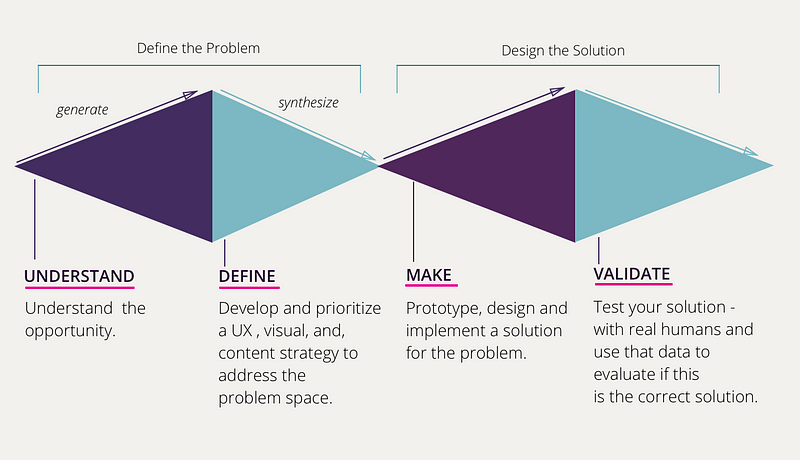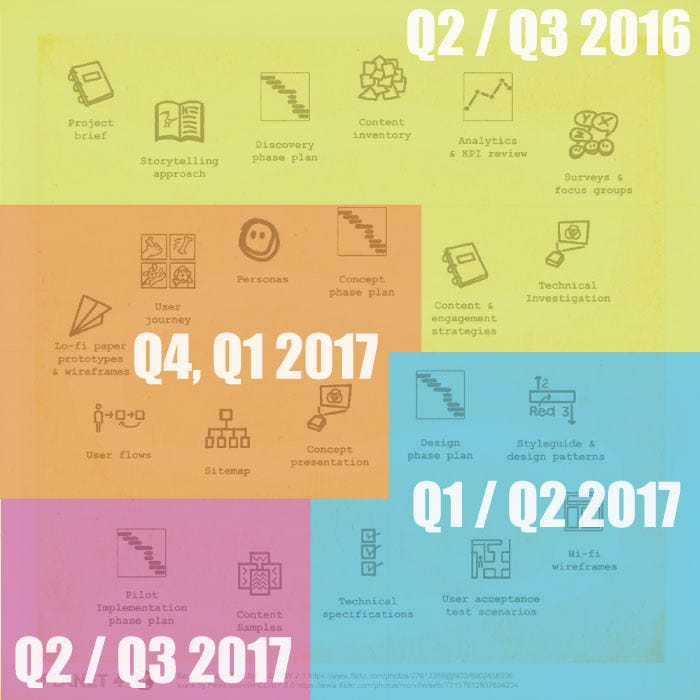With a project like Planet 4, a plan needs to be flexible. Considering our broader scope and innovative ambitions, we constantly have to explore and dig into problems, before finding and testing solutions. This constant cycle of defining a problem, coming up with hypothesis that addresses it, making something to test those hypothesis (even if it’s just a Medium post asking for feedback), and then reviewing the test results is a cyclical method, common in software development philosophies. While Double Diamond, Release Early, Release Often, Scrum, Kanban and many other methodologies use cycles that look slightly different, in the end they are all agile methodologies.
Agile software development emphasizes creativity and flexibility and provides a space for us to try, fail, improve. Then try, fail and improve some more. It is creative and flexible, allowing us to iterate and address during the course of one or multiple sprints.

Run fast, sprint
Because we are using both agile and open methodologies to develop Planet 4, there are some things that are inherently a bit more difficult and relatively new to Greenpeace. One of the casualties of the switch from rigid, lengthy planning processes to more agile workflows is specific long term timelines.
While our long term timelines are broad and flexible, our short term workflows are very, very specific. We organize our work into two week “sprints”. A month on the Planet 4 project looks like this:

Every two weeks, the Planet 4 team comes together to define high level, achievable goals for the sprint. Subteams then refine those goals into specific tasks based on their areas of focus. Once agreed, tasks are logged and assigned in Jira, and everyone gets to work. After a week, we check in with one another to see if there are blockers or to onboard new fellows and catch them up. We then write about the work or create demos, so that the greater community can actively contribute or generally stay up to date with the project. This document includes more detailed documentation on each individual step of this process.
For the next two weeks, we are continuing our work on Audience Archetypes and expanding our team. We are starting interviews for the 4 positions we told you about, and we’re onboarding some creative thinkers from Bocoup. We will also finish the technical analysis and define guidelines and processes for reviewing WordPress modules and co-development. You can read about our specific goals and tasks in this Sprint Planning document.
Towards the end of December and into the new year, we’ll continue working in the Concept Phase. Please make sure you read this post, as it outlines the rest of the work we have to do in this phase and, more importantly, how you can get to work with us!
The Broad timeline
For Planet 4, we strive to keep you informed and engaged in the process. We’re doing this because at the end of the day, every supporter, web manager, colleague and volunteer is a stakeholder in what Greenpeace.org and the tens of country specific sites is and does.
To that end, this is the broad timeline which today looks close to reality:

There are so, so many implications to what you see in this treasure map, and this methodology will allow continuous prototyping. Behind each of these icons there are (and will be) teams of people working together to move this game-changing project along. We need your input and creativity to make sure that what we build is useful, engaging, interesting and drives people to action in all 40 + websites that Planet 4 will turn into.
Help us understand your questions, ideas, concerns — whatever you’re thinking about the new greenpeace.org and the CMS that will support Greenpeace websites around the world. Leave your comments below, tweet them at #GPP4 or join the discussion on our newsgroup.
Thanks so much to Luca who edits all the Planet 4 posts and is generally awesome.
(cross posted on Planet 4 Medium Channel)